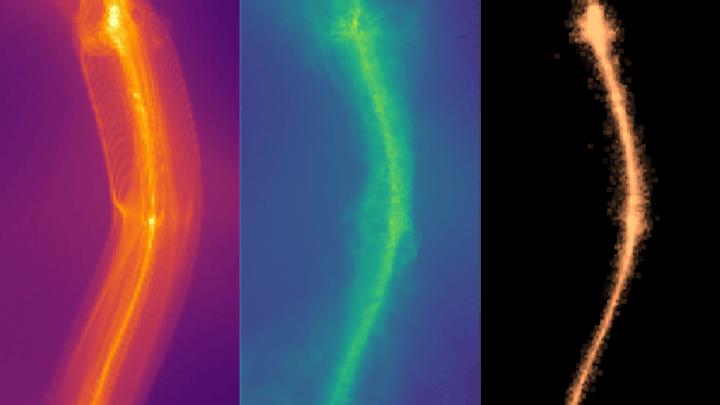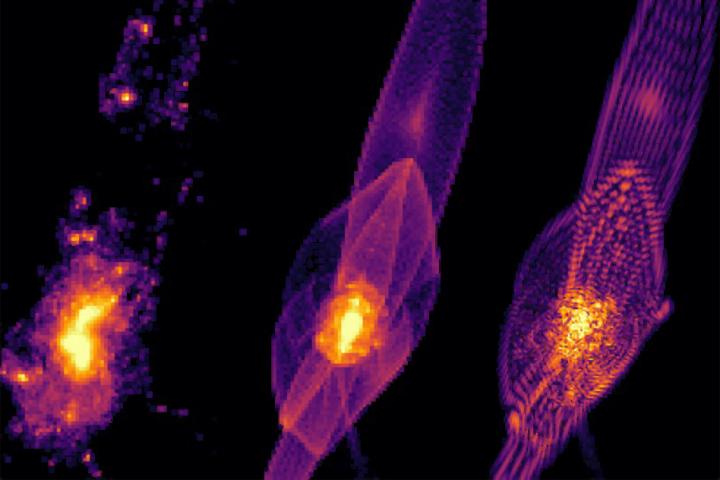How a universe made out of fuzzy dark matter might look
The exact composition of 84 percent of all the matter in the universe is unknown. That is the portion, called dark matter, which neither emits radiation nor interacts with conventional matter that we already know of in any other way than through gravity. Cosmologists believe they can use the standard model of the universe, Lambda-CDM, to get to the bottom of dark matter. This model assumes that dark matter is “cold” (cold dark matter – CDM).
In physics, “cold” means that something is moving slowly. So-called “WIMPs” (weakly interacting massive particles) would have to be previously unknown particles, heavier than anything we know of so far, and would be detectable only by means of their gravity. The fact that dark matter is gravitationally active is basically the only thing we know about it for sure. In fact, that’s how its existence was determined in the first place.
The Lambda-CDM model does indeed reflect reality to a good degree, better than any other model to date. But it also has its weak points. These include the fact that the CDM particles, the WIMPs, have still not been found. But some distributions of dark matter around small galaxies also do not behave how the researchers of cold dark matter would expect.
That’s one reason the search for other models continues. “Hot dark matter,” for example, could be made up of neutrinos that move at almost the speed of light. However, it’s already fairly well accepted that there wouldn’t be enough neutrinos to fill up the universe with dark matter as would be required. Axions, previously purely hypothetical particles, are another possible form of dark matter.
Some researchers have proposed a third form: fuzzy dark matter. Why “fuzzy” of all things? Its particles would be very, very, very small and lightweight. Their mass would be on the order of magnitude of 10-22 electronvolts (eV), that is, 28 orders of magnitude smaller than an electron. Due to the Heisenberg uncertainty principle, particles with such a low mass would become smeared over large distances. Thus, fuzzy dark matter would have quantum properties at an astronomical scale, while particles known to us can be measured with their quantum properties only at extremely small scales.
Therefore, fuzzy dark matter is not detectable; in principle, it would defy any observation. But just because we can’t hold it or measure it doesn’t mean that it doesn’t exist. In fact, the fuzzy form of dark matter would solve the problem of the distribution of matter in galaxy halos. And there might be another way to figure out in what form dark matter actually exists. An international team of researchers has simulated how the evolution of the early universe would have looked for each case of dark matter. Certain structures, called filaments, along which the first stars were created, would have formed differently in each case (see the picture). Now the astronomers only have to be able to look far enough back in time to be able to clear up this question. That should be possible with the future James Webb space telescope.

(picture: Universities of Princeton, Sussex, Cambridge)
